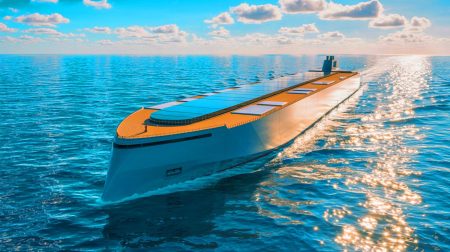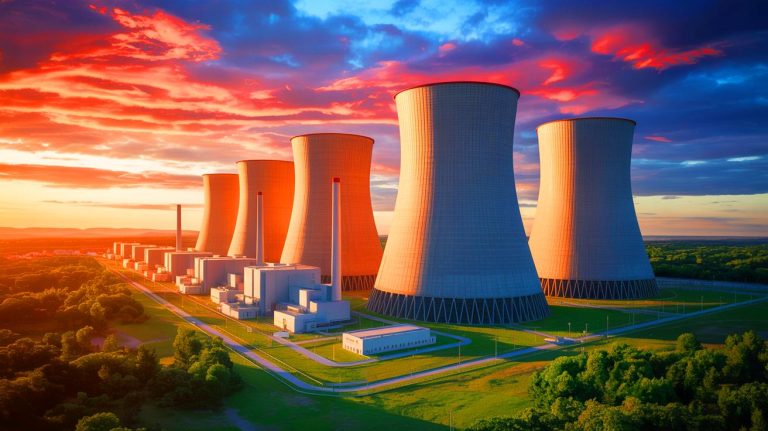| IN A NUTSHELL |
|
China has once again captured global attention with its groundbreaking achievement in nuclear energy. The Qinshan Phase III nuclear plant, specifically Unit 1, has set a new world record for continuous operation, running for an awe-inspiring 738 days before being taken offline on May 1. This remarkable feat not only underscores the reliability and efficiency of CANDU-6 reactors but also highlights China’s commitment to reducing its carbon footprint. By generating over 12.5 billion kilowatt-hours of electricity, the plant has significantly reduced coal usage and carbon emissions, making a substantial environmental impact.
The Global Footprint of CANDU Reactors
CANDU-6 reactors, developed in Canada, have a significant presence around the world. With nine reactors operating globally, they are a testament to the robust design and operational excellence of Canadian nuclear technology. These reactors are located at strategic sites, including the Cernavoda plant in Romania, the Embalse plant in Argentina, the Point Lepreau plant in Canada, Qinshan III in China, and the Wolsong plant in South Korea. Each location benefits from the unique capabilities of CANDU reactors.
CANDU, an acronym for “CANada Deuterium Uranium,” represents a type of pressurized heavy-water reactor (PHWR). It utilizes heavy water as a moderator and natural uranium as fuel, a design pioneered by Atomic Energy of Canada Limited (AECL) and other partners. A key feature of CANDU reactors is their horizontal calandria vessel, containing 480 tubes that allow continuous refueling without shutdown, contributing to their long operational streaks.
Despite Qinshan’s recent achievement, the global record for continuous nuclear operation is still held by Darlington Unit 1 in Canada, which ran continuously for 1,106 days. This reinforces the reliability of PHWR technology in maintaining uninterrupted power supply.
Extending the Life of Qinshan Phase III
Qinshan Phase III, composed of two CANDU-6 reactors, has been operational since the early 2000s. With their original 30-year design lives nearing completion, a comprehensive refurbishment program is underway. This initiative aims to extend the reactors’ lifespan by another 30 years, ensuring continued energy production and environmental benefits.
The refurbishment process involves replacing aging fuel channels and overhauling thousands of auxiliary components. Such a task is intricate, requiring the dismantling and replacement of each of the 480 pressure tubes. These channels, crucial for carrying nuclear fuel, must withstand high pressure and temperature for decades.
Over the years, the CANDU design has evolved, with early models producing around 500 MWe. The design was later refined into the 600 MWe CANDU-6, optimized for standalone units or smaller plants. Efforts were also made to develop the CANDU-9, a larger version, applying the principles of the CANDU-6. This evolution ensures that CANDU technology remains at the forefront of nuclear energy innovation.
The Environmental Impact of Qinshan’s Achievement
Qinshan’s record-setting performance not only highlights technological prowess but also underscores a significant environmental achievement. By generating 12.5 billion kilowatt-hours of electricity, the plant has effectively reduced coal consumption by 4.19 million tons and cut carbon dioxide emissions by 10.98 million tons. This aligns with global efforts to transition to cleaner energy sources and combat climate change.
The ability of CANDU reactors to operate continuously while being refueled sets them apart from other nuclear designs. This capability enhances their operational efficiency and supports uninterrupted power supply, essential for meeting the growing energy demands of modern societies. The success of Qinshan’s reactors demonstrates the potential of nuclear energy as a sustainable and reliable solution for the future.
Future Prospects for Nuclear Energy
The ongoing success and modernization of the Qinshan reactors serve as a testament to the enduring viability of CANDU technology. As countries worldwide strive to balance energy needs with environmental concerns, nuclear power remains a critical component of the energy mix. With advancements in reactor design and refurbishment, the potential for extended reactor lifespans offers a promising outlook for nuclear energy.
As global energy demands continue to rise, the question remains: How will nations leverage the advancements in nuclear technology to achieve a sustainable energy future while addressing environmental challenges?
Did you like it? 4.6/5 (23)









Wow, 738 days straight! That’s like my fridge running non-stop since I bought it 😅. Impressive!
How does the CANDU-6 manage to refuel without shutting down? That seems like a game-changer for efficiency.
Not sure how I feel about nuclear energy, but reducing carbon emissions is definitely a plus. 🤔
Thanks for the article! I didn’t know about the CANDU reactors before.
This is amazing! I wish more countries would adopt similar nuclear technology for clean energy.
738 days of operation is impressive, but how does it compare to the safety record of other reactors?
I’m all for reducing coal usage, but how safe are these reactors really? 😬
Great achievement! But what are the risks involved with extending the reactor’s life by 30 years?
So, China is leading in nuclear energy now? What happened to the rest of the world?
Can we trust the data coming from China regarding their nuclear achievements?
Seems like the CANDU-6 is a beast indeed! 👏
Is the refurbishment process environmentally friendly? Sounds like a lot of work!
The environmental impact is impressive! But what about the long-term waste management? 🚮
Are there any ongoing international collaborations to improve nuclear technology?
Is there any way to track the carbon emission reductions in real-time from these reactors?
Thanks for sharing this! I hope more countries follow China’s lead in clean energy. 🌍
The ability to refuel while running is mind-blowing! Is this unique to CANDU reactors?
What are the potential downsides of using heavy water in the CANDU reactors?
I love hearing about technological advancements like this. Keep it up, China!
I’m curious—how do these reactors compare in cost to traditional nuclear power plants?
Any idea if and when the CANDU-9 will be fully developed and operational?
It would be great if other countries could replicate this success. 🌟
Does the refurbishment involve any new safety measures considering the extended lifespan?
Congratulations to China, but we must also consider the potential environmental risks of nuclear energy.
How does this achievement impact China’s energy policies moving forward?
738 days is impressive, but let’s not forget about the risks of nuclear energy. 🤷♂️
I’m skeptical about nuclear power, but cutting carbon emissions is definitely a good thing.
Thanks for the info! It’s always fascinating to learn about advancements in nuclear technology.
Are there any plans to implement similar reactors in other parts of the world?